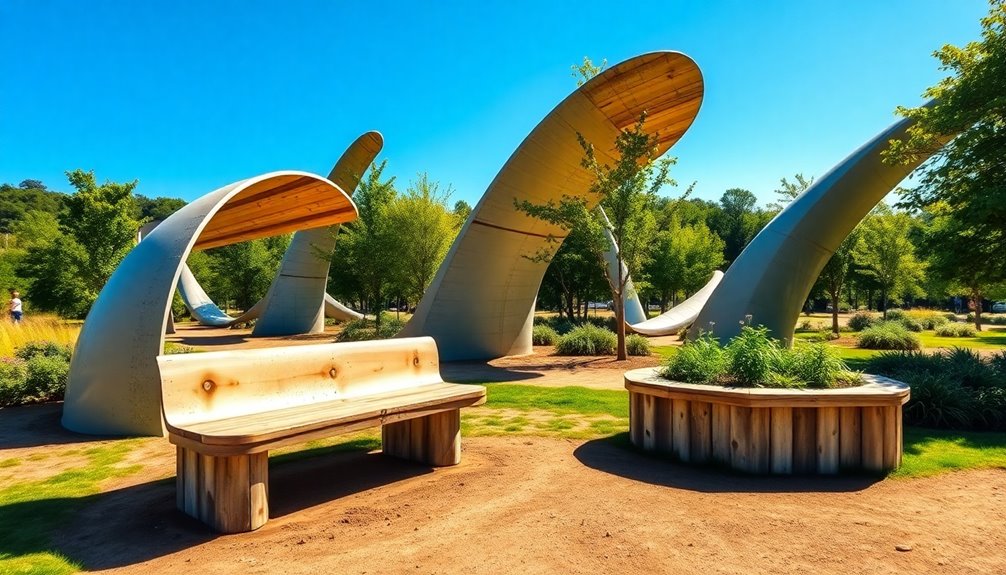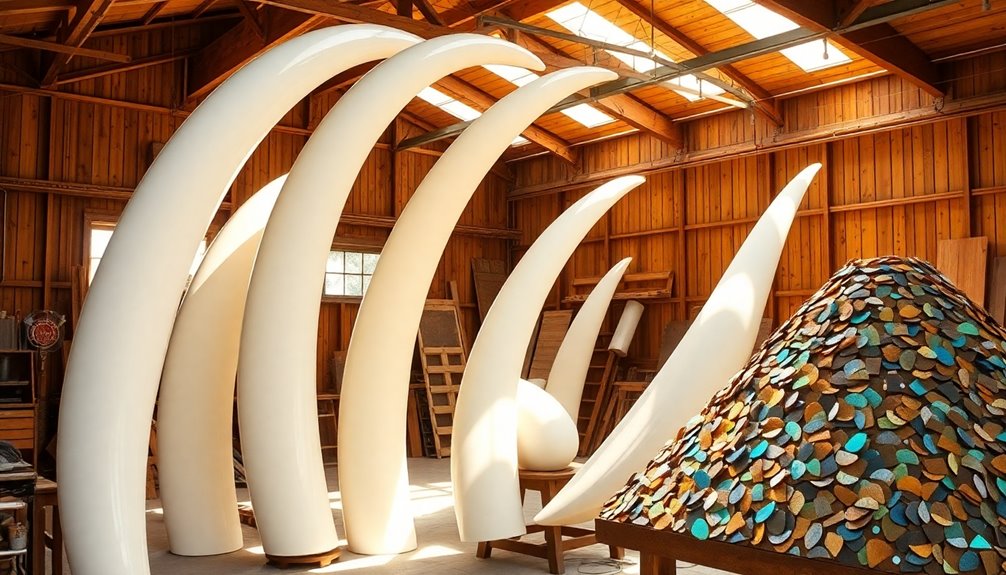You can transform retired wind turbine blades into valuable resources that boost the circular economy. Innovative recycling methods like mechanical grinding and pyrolysis help recover materials for new uses. You can also repurpose blades into functional structures like benches or utility poles, minimizing waste. Refurbishment extends blade life, making your infrastructure more sustainable. By embracing these strategies, you contribute to effective resource management and learn about exciting projects leading the way in this field.
Key Takeaways
- Innovative recycling technologies, like mechanical grinding and pyrolysis, are essential for transforming retired blades into reusable materials for construction and composites.
- Repurposing old blades into functional items, such as park benches and utility poles, minimizes waste and conserves resources.
- Refurbishment techniques can extend the lifespan of wind turbine blades, promoting sustainability and reducing the need for new materials.
- The shift towards recyclable materials and natural fibers in blade construction supports the circular economy and reduces environmental impact.
- Collaborative projects, such as DecomBlades, are crucial for developing sustainable management practices for retired wind turbine blades.

As the wind industry pushes toward sustainability, transforming retired wind turbine blades into valuable resources is becoming essential for a circular economy. You're witnessing a growing commitment to recyclability, aligning with EU sustainability goals. The impending European-wide landfill ban on decommissioned blades by 2025 is driving the need for innovative recycling technologies. This urgency has sparked increased research and development aimed at finding effective recycling methods and alternative materials for blades.
You might be intrigued by the various strategies for blade recycling. Mechanical grinding breaks down blades into pellets, which can be integrated into composites or used in cement production. Pyrolysis offers a thermal decomposition method to recover materials, while solvolysis employs chemical breakdown to retrieve glass fibers. Cement co-processing is another approach, effectively reducing waste while contributing to construction materials. Technological advancements are crucial, focusing on developing recyclable materials that enhance recycling efficiency.
Repurposing is another exciting avenue. You've probably seen old blades transformed into structural components for highway signs, which not only cuts costs but also reduces CO2 emissions. Blades can serve as utility poles or park benches, and some artists even create stunning visual artworks from them. Often, repurposing proves more cost-effective than refurbishment, minimizing landfill waste and conserving valuable resources.
When it comes to refurbishment, techniques like repair and maintenance can extend the life of blades. Economic viability plays a role in deciding whether to refurbish or invest in new blades. Enhancing durability through better materials and regular maintenance is vital, as is safety evaluation before continued operation. Refurbished blades can find new homes, both within the EU and beyond.
As you explore these innovative materials and designs, consider the shift towards recyclable thermoplastic and thermoset composites, along with natural fibers. The industry is actively pursuing circular economy principles, aiming to minimize material usage and close material loops.
With collaborative projects like DecomBlades and initiatives from companies like Siemens Gamesa, the future looks promising for the sustainable management of retired wind turbine blades.
Frequently Asked Questions
What Materials Are Used in Wind Turbine Blades?
Wind turbine blades are primarily made from composite materials, combining polymers with fibers like glass and carbon.
You'll find these materials are designed for strength and durability, essential for withstanding harsh conditions. Typically, thermosets like epoxies and polyesters serve as the matrix.
Sandwich structures, often featuring balsa wood or foam cores, enhance performance. The weight-to-strength ratio is crucial, ensuring efficiency without compromising durability in the blades' design and functionality.
How Long Do Wind Turbine Blades Typically Last?
Think of wind turbine blades as the sturdy sails of a ship, guiding renewable energy across the seas of time.
Typically, they last about 20 to 25 years, depending on how well you maintain them and the conditions they face.
Regular upkeep can extend their lifespan, much like caring for a sail ensures it withstands the elements.
What Are the Environmental Impacts of Disposing of Old Blades?
When you dispose of old wind turbine blades, you contribute to significant environmental issues. They often end up in landfills, where their glass fiber-reinforced polymer materials can take centuries to degrade.
This not only wastes valuable resources but also leads to methane emissions and consumes limited landfill space. You might also notice that current recycling options are limited, making it hard to recover materials and support sustainability goals effectively.
Can Retired Blades Be Recycled Into New Products?
Did you know that over 90% of retired wind turbine blades can be recycled into new products?
Yes, retired blades can definitely be recycled! Innovations in technology, like Vestas' chemical process and Carbon Rivers' pyrolysis, enable you to break down the materials and reuse them in various industries.
This not only reduces waste but also conserves resources.
What Are the Costs Associated With Blade Disposal and Recycling?
When you're looking at the costs of blade disposal and recycling, you'll find disposal fees average around $55 per ton for shredded material.
In places like Texas, volume-based fees can reach about $15 per cubic yard.
While disposing of 1,000 blades can generate significant revenue for landfills, recycling remains challenging due to technological limitations and market uncertainties.
These factors make it essential to consider innovative approaches for managing retired turbine blades effectively.
Conclusion
In transforming retired wind turbine blades, you're not just recycling; you're stitching together a sustainable future, much like a quilt made from diverse fabrics. By embracing innovative solutions, you're paving the way for a circular economy that values every resource. This shift not only reduces waste but also fosters a resilient infrastructure, ensuring that these once-mighty blades continue to serve a purpose. Together, you can turn potential waste into valuable assets, enriching both the environment and the community.









